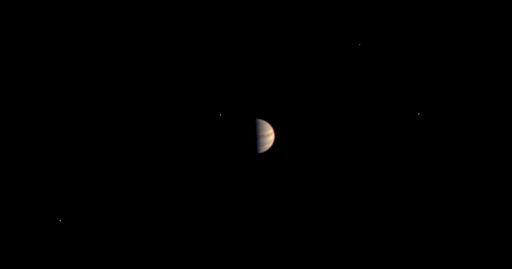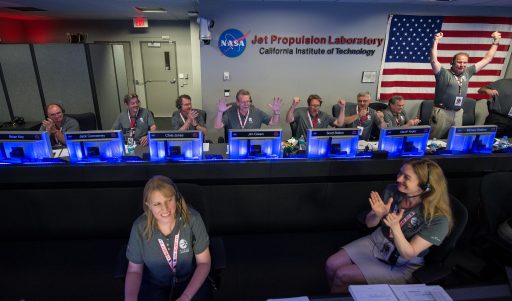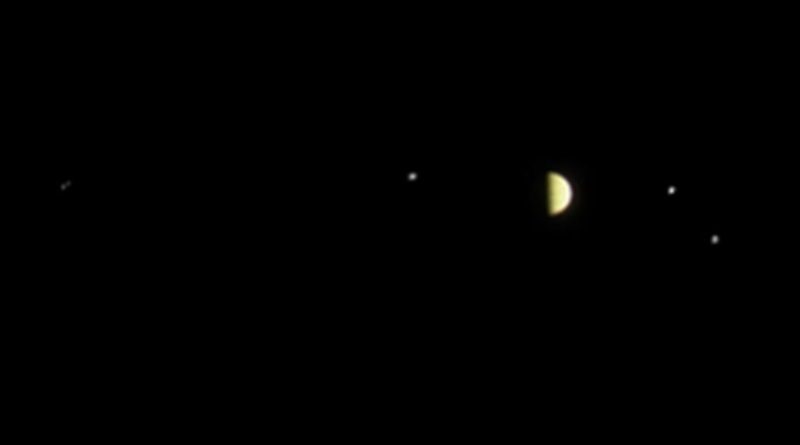Stunning Juno Approach Video shows Cosmic Ballet of Jupiter’s large Moons
NASA celebrated the successful orbital insertion of the Juno spacecraft Monday night, becoming the second to enter orbit around the Gas Giant after the Galileo mission flown in the 1990s. After Juno was confirmed in its initial Capture Orbit following a 35-minute braking maneuver, NASA released an animation covering 17 days of Juno’s approach to Jupiter as seen by the JunoCam instrument.
This is the first video showing a large-scale cosmic ballet in motion with Jupiter’s Galilean Moons dancing around the planet. During Juno’s 2013 flyby of Earth, a similar video was created showing the Moon going around Earth as Juno departed on the final leg of its journey into the outer solar system.

The video released on Tuesday starts out on June 12 with Juno about three weeks from arrival and concludes at JOI-5 days on June 29 when all of the spacecraft’s instruments were deactivated to focus all resources on the critical orbital insertion. In total, the video has been assembled from 1,500 still images delivered by JunoCam.
As noted by Juno’s mission team, the approach sequence represents the first-ever up-close look at celestial harmonic motion. Aiming for a polar orbit around Jupiter, Juno was able to deliver a unique view of Jupiter’s four large moons orbiting the massive planet – other missions visiting Jupiter were flying closer to the equator and were not able to catch this particular view.
In the video, Jupiter’s Galilean Moons – Io, Europa, Ganymede and Callisto (from inner to outer) – are seen orbiting Jupiter. The 17-day duration of the animation is just enough to capture one full revolution of the outer of the four, Callisto. Ganymede takes a little over seven days for one lap around the planet while the inner moons race around Jupiter every 3.6 and 1.8 days, respectively.

The three inner moons are seen going through eclipse, passing through the shadow of Jupiter. All moons, especially Callisto, appear to exhibit a slight flicker, but that is due to the optical design of JunoCam, optimized to capture bright features on Jupiter, not dim points wandering across the sky.
Juno will aim to create another approach movie when closing in from around 8 million Kilometers in its first capture orbit, providing a view of the close approach that could not be obtained ahead of orbital insertion. However, the spacecraft will no longer be able to observe the full ballet of all four Galilean moons due to its close range to the planet.
Juno’s mission of discovery is expected to begin in October when the spacecraft will spiral down from a 53.5-day orbit into its 14-day science orbit, using its nine instruments to study the origin and evolution of Jupiter and to explore the phenomena driving the planet’s bright auroral display and intense magnetic field that would match the size of the Moon in the night sky if it was visible to the human eye.

